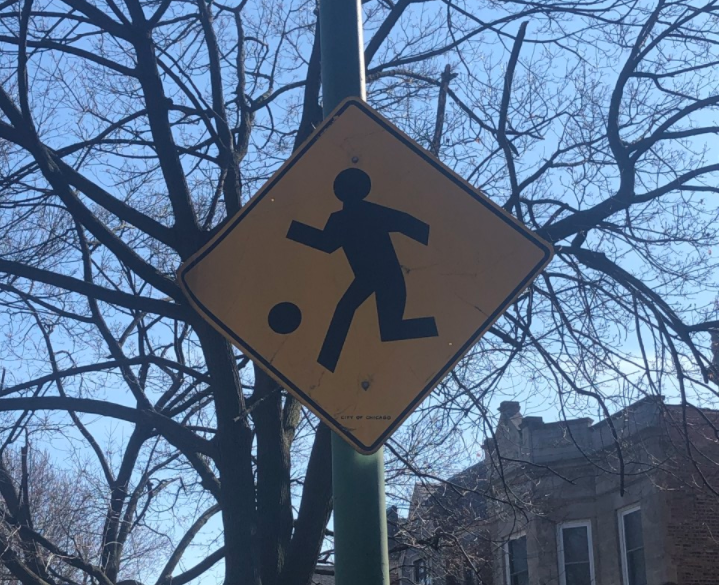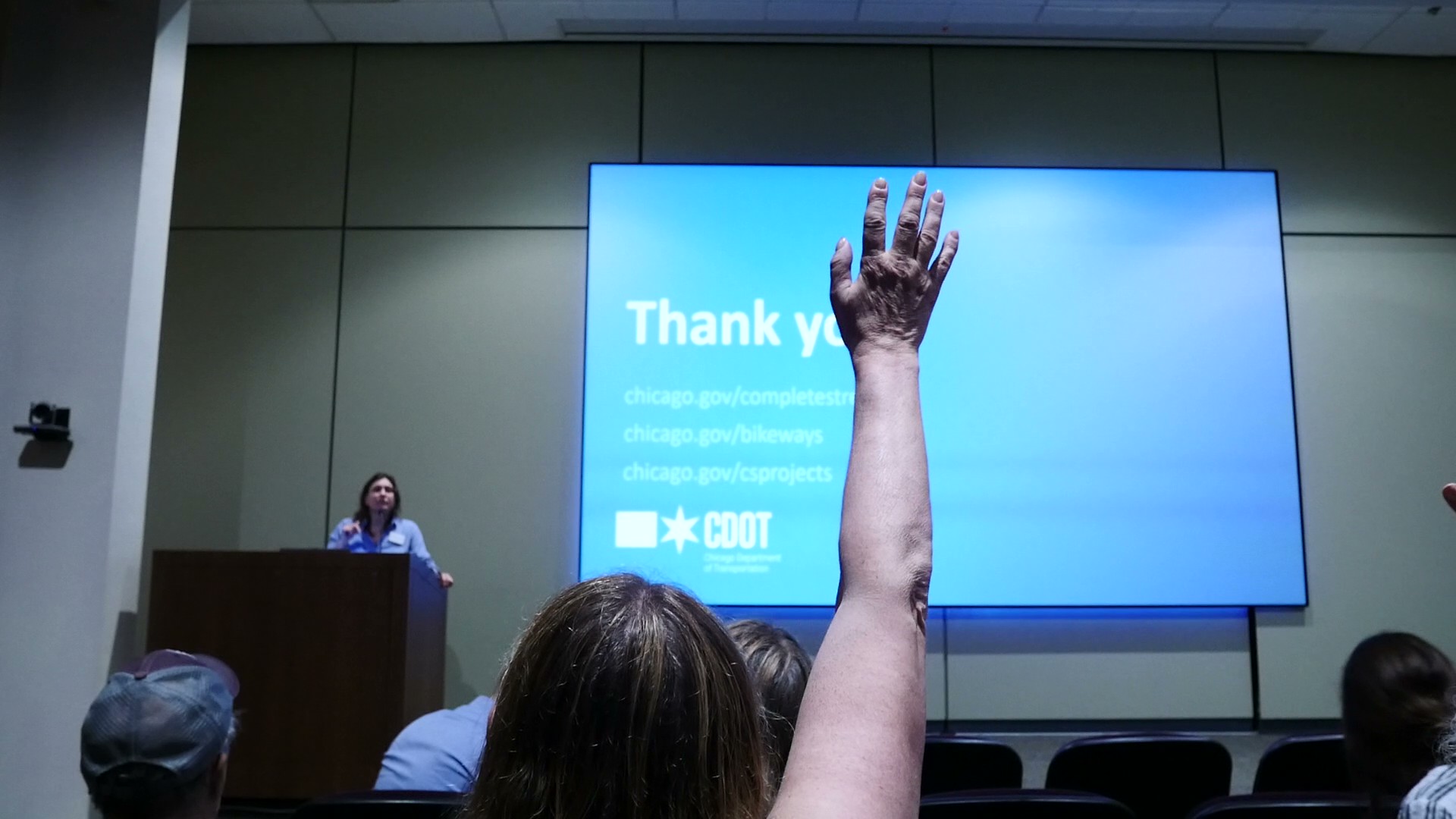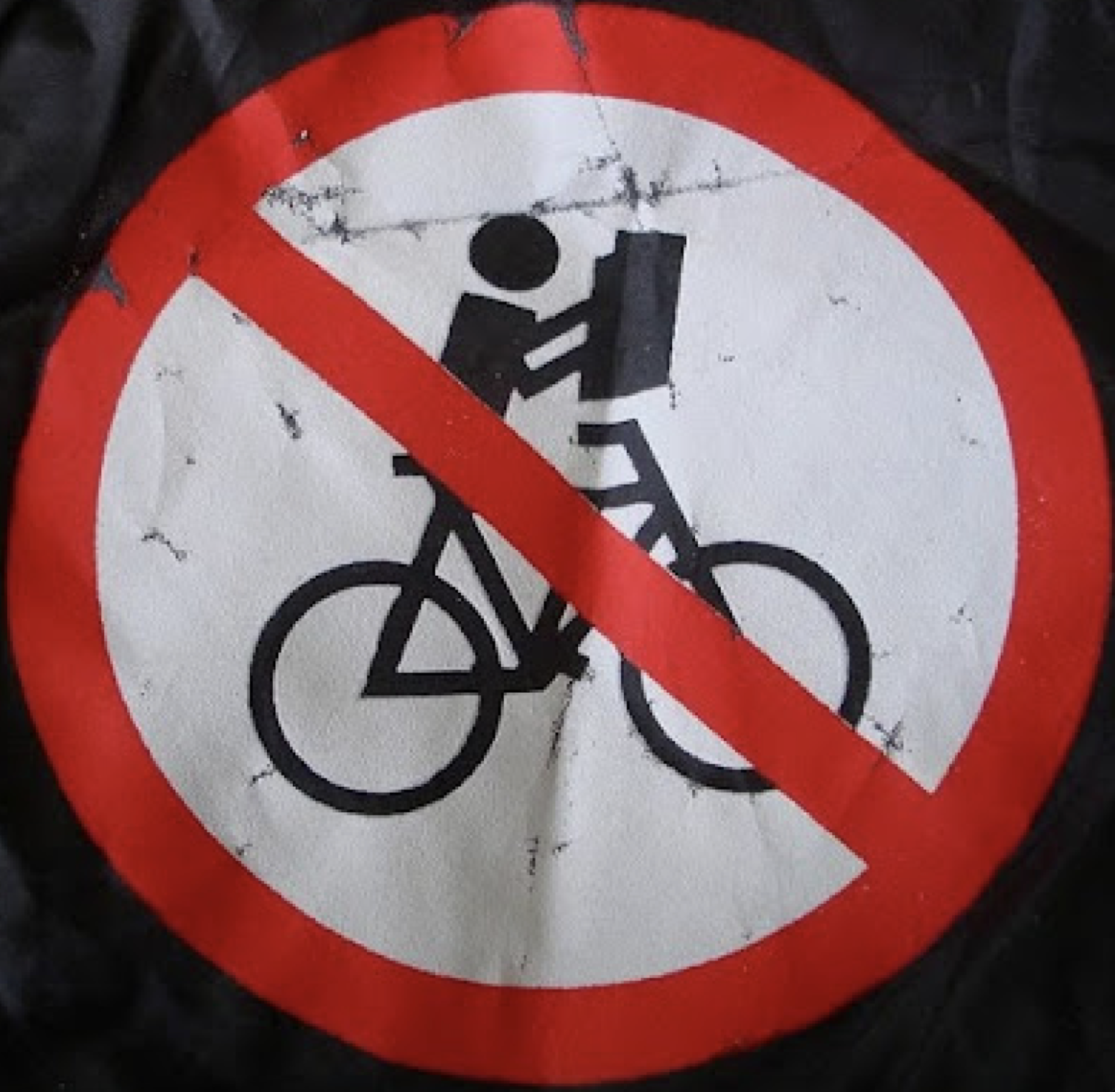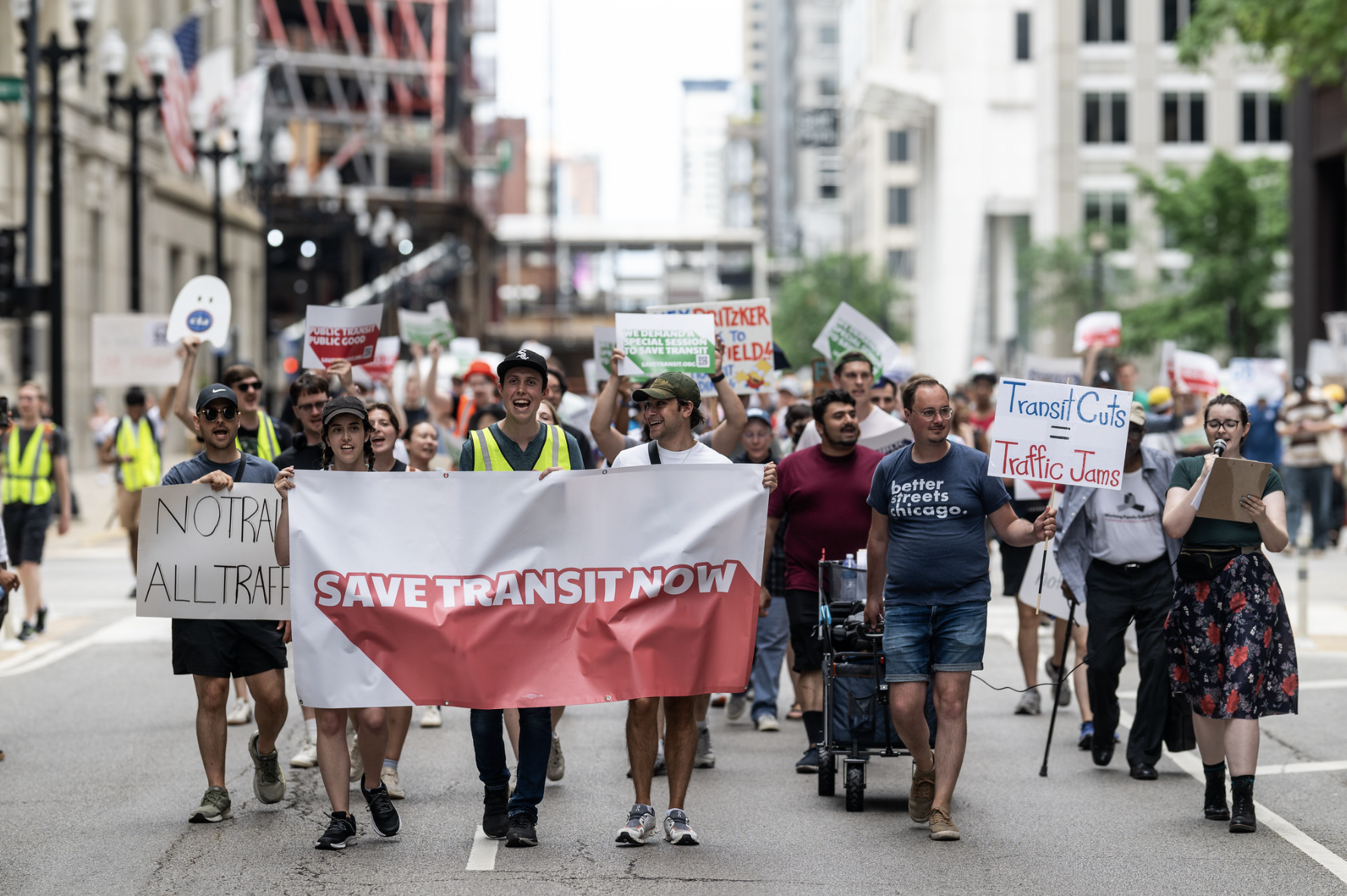The COVID-19 crisis has obviously been creating health risks and economic hardships for many Chicagoans. Here are some resources for people struggling during this time, as well as opportunities to help out others if you've been more fortunate.
However, one silver lining of the Stay at Home era for me has been the lighter motor vehicle traffic, which I have honestly been enjoying. I've been able to slow down and figure out a new, low-stress local bike route for myself in my neighborhood, Rogers Park. It will still probably be relatively chill even after non-essential car trips are legal again.
I've also been doing some people-watching and observing transportation patterns in other communities while running essential errands or biking for recreation (which is allowed under Illinois' SAH order.) During these excursions, I have been struck by two things: the potential for creating safer streets for everyone if we repurposed the space we dedicate to moving and storing cars; and the need for traffic calming throughout the city.

The heavy use of Chicago's Lakefront Trail, Chicago Riverwalk, and The 606 corridors on one of the first nice days of spring, which resulted in the paths being closed for the rest of the pandemic, shows that there's a latent demand for safe places to walk, run, and bike. People flock to these spaces because they're an escape from the dangers and stresses of car traffic, and the shoreline path is especially popular because of the beautiful lake views. Since then the city has temporarily or permanently closed many other neighborhood parks.
It makes sense that people want to use trails and parks during a time when that's one of the few ways to recreate and get physical activity outside of the confines of your home. Instead of cracking down on folks trying to exercise and/or clear their heads, the city should respond to the increased demand for safe places to walk, run, and bike by looking into ways to increase, rather than reduce, the amount of car-free public space.
I understand that in times of crisis, it can be difficult for many people to think outside the box. That seems to be the case with many Chicago politicians and transportation officials. Several other U.S. cities, including are currently opening up multiple miles of streets to make more room for car-free, socially-distanced transportation and recreation.
UPDATE: Louisville, KY quietly overtook Vancouver, and two others in the top five North American cities, with 11 miles of #Covid19Streets #OpenStreets
1) Minneapolis: 18 miles2) Denver: 13.3 miles3) Louisville: 11 miles4) Vancouver, BC: 10.53 miles5) Portland, OR: 7.5 miles
— Mike Lydon (@MikeLydon) April 9, 2020
And Oakland, California, just announced that car movements will be restricted on a whopping 74 miles of residential roadways to facilitate safe pedestrian activity and biking in the street. Local politicians, such as 40th Ward alderman Andre Vasquez, have said they're worried that creating more space on Chicago streets for pedestrians might encourage dangerous congregating. And the Active Transportation Alliance (in a blog post by former Streetsblog writer Lynda Lopez) has expressed concerns about diverting resources from other pandemic efforts, and the potential for over-policing as part of open streets events.
Alright, I’ll respond. Lol. Our office had talked about pedestrianization efforts (on Lincoln) for social distancing but the concern is that it would actually create an attraction and thus the opposite effect of what’s intended. Not worth the risk, unfortunately.
— Andre Vasquez, Political Account 🌹 (@Andrefor40th) April 7, 2020
However the Oakland model seems to eliminate most of those issues. Since the car-lite space will be distributed all over the city, crowding in any particular part of town shouldn't be a major problem, and the program will help de-congest parks and trails. It appears to be fairly cheap and easy to implement, and little or no additional policing seems necessary, since the network is all on side streets.
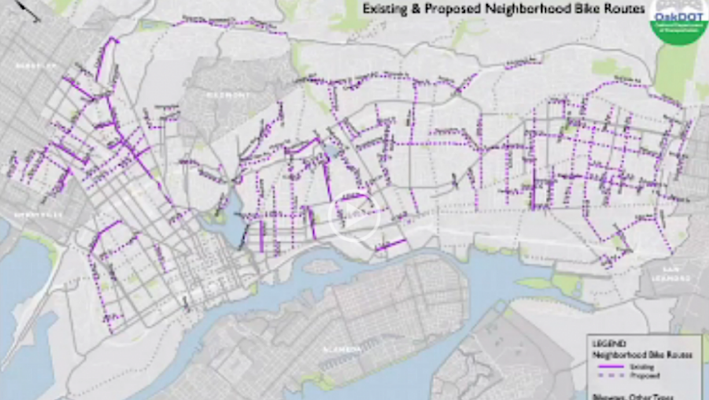
The post you're reading was inspired by things I observed on my bike rides. I consider children's activity (or the lack thereof) within a block telling.
The Coronavirus has made me realize we need to come up with a new way of determining speed on neighborhood streets. No more 85th percentile but focused on children who are playing in the street. If children aren’t outside playing, we need to lower the speed & traffic counts. pic.twitter.com/kvGg3oRyD1
— Sam Balto (@CoachBalto) April 3, 2020
Recently I was on Paulina Street in Ravenswood came across a sign indicating children at play. I was struck by the lack of traffic calming on the street. There were no speed humps, certainly no chicanes, road narrowing, or even a 20mph sign. This particular street is very close to Irving Park Road, a five-lane arterial that normally sees lots of car traffic. I could see why folks along this block would want infrastructure to slow down drivers who may be in a hurry on their way to a major road. It's disappointing that so far all the city has offered them is a sign.
Along this same block were children playing on the sidewalk and many people passing by them on the sidewalk. If our city prioritized more green space and sustainable modes of travel, perhaps we wouldn't see the street lined with empty vehicles. This is a particularly wide street and I think there is room for compromise when it comes to limiting car parking and finding better uses for the street. Our insistence for using the public right of way for storing empty metal boxes has consequences. The lack of room for socially-distanced recreation is one of them.
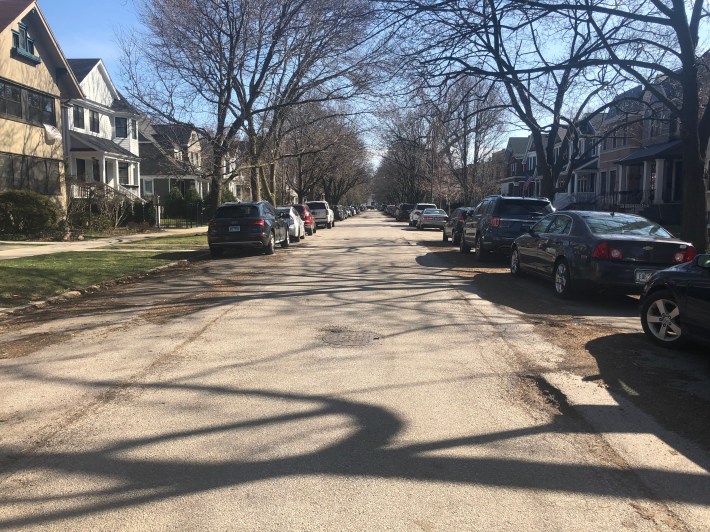
I certainly understand that open streets is not a priority in all neighborhoods at this time but the city should be responding to demand for open streets where it exists. Given that there are fewer drivers on the road, the speed at which the Chicago Department of Transportation can implement traffic calming or open streets should be increased. One idea for responding to demand could be creating a way for residents to request traffic calming within their neighborhood. A digital form could be added to CDOT’s website (if adding an option to the CHI 311 app is too time-consuming) and aldermen could help get the word out about the form through their newsletters.
I'll end with this example of low-cost traffic calming from the Philadelphia area that could be installed along many of Chicago's side streets.
Owen Ave at Marshall: sets the tone that you're going to need to chill. pic.twitter.com/dOmyXGKgYn
— BCGP Biking The Region (@BikingTheRegion) October 21, 2019
Here are some tips on preventing the spread of COVID-19, and advice for Chicagoans on what to do if you think you may have been exposed to the virus.
